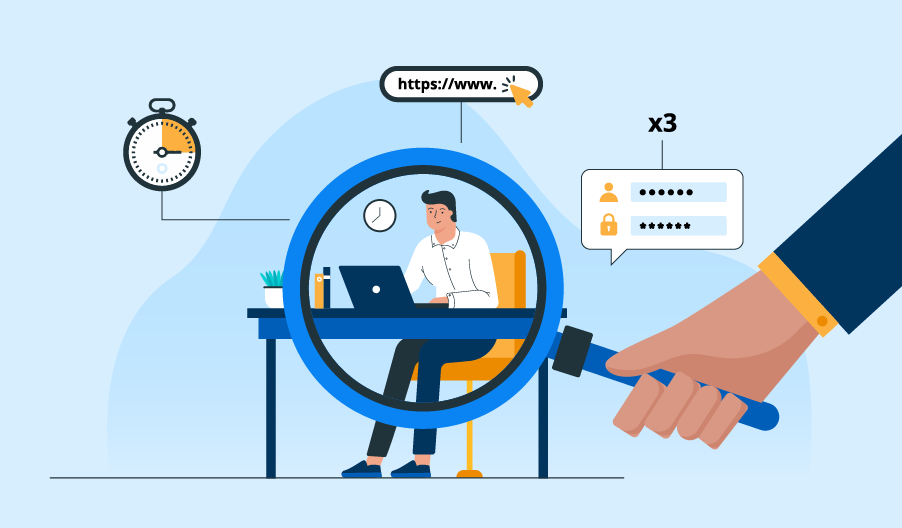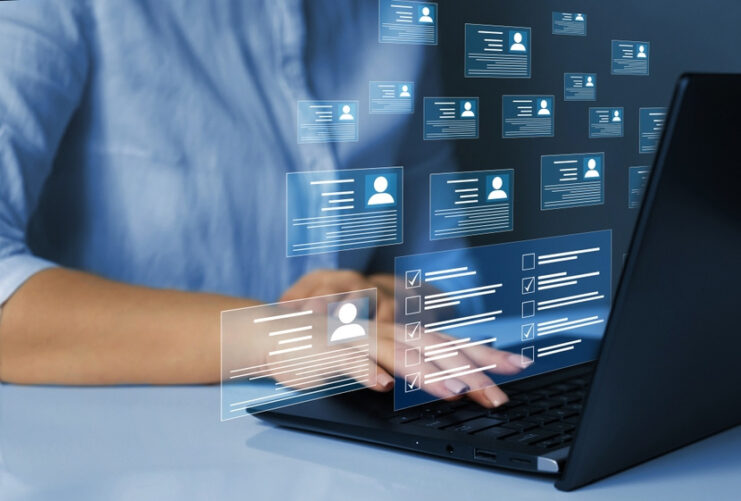The landscape of work is undergoing a transformative shift, propelled by the rapid rise of remote work. In the wake of the COVID-19 pandemic, the workforce dynamic has evolved, and businesses are compelled to reassess their operational strategies.
As we get into this paradigm shift, it’s crucial to acknowledge the profound impact of remote work on employee dynamics and business efficiency. According to the latest statistics, the number of remote workers has surged by an astonishing 115% since 2005, signifying a seismic change in the way we approach labor.
Here, we will explore the intricacies of mobile work and get into the challenges and opportunities it presents for businesses. We’ll particularly focus on the role of monitoring software, with Controlio emerging as a leading solution in this evolving landscape.
The Remote Work Revolution

The COVID-19 pandemic has acted as a catalyst for remote work adoption, forcing businesses to reimagine their operational structures. In 2022, a staggering 42% of the U.S. workforce was working remotely. This shift is not limited to the United States; globally, businesses are recognizing the potential benefits of mobile labor, including increased employee satisfaction and access to a broader talent pool.
As the business landscape continues to evolve, companies must proactively embrace remote work to stay competitive. This includes addressing challenges such as team cohesion, productivity tracking, and data security.
Challenges of Remote Work and the Need for Monitoring Software
While remote work offers flexibility and freedom, it also presents unique challenges. One of the primary concerns for businesses is ensuring that employees remain productive while working from diverse locations.
Traditional methods of monitoring work hours and performance evaluations may fall short in this decentralized labor environment. This is where monitoring software plays a pivotal role. Controlio, a sophisticated monitoring solution, empowers businesses to gain real-time insights into employee activities.
Fostering Collaboration in a Virtual Space
One common concern associated with remote work is the potential decline in teamwork and collaboration. However, modern technologies, coupled with monitoring software, can bridge this gap. In the era of virtual collaboration, businesses need to invest in tools that facilitate communication and group cooperation.
Employee Well-being in the Remote Work Era

Maintaining a healthy work-life balance has become a top priority, especially in a remote work setting. Monitoring software goes beyond tracking work hours; it actively helps businesses ensure that employees are not overburdened and can disconnect after labor hours.
This proactive approach to employee well-being results in higher job satisfaction and increased retention rates. Studies show that companies prioritizing employee well-being witness a remarkable 21% increase in overall productivity.
Moreover, mobile workers reporting a positive work-life balance are 35% more likely to stay with their current employer, emphasizing the significance of incorporating employee-centric practices into remote job policies.
Cybersecurity in the Virtual World
As businesses transition to remote work, cybersecurity becomes a top concern. The decentralized nature of remote labor environments makes companies more vulnerable to cyber threats. With the increase in cyber-attacks globally, businesses cannot afford to overlook the importance of robust cybersecurity measures.
Cost-Efficiency Advantages of Remote Work

Adapting to the remote work culture isn’t just about survival; it’s also about thriving economically. Remote work translates to a reduction in overhead costs related to office space, utilities, and other facilities.
Monitoring software further enhances cost efficiency by ensuring that mobile work aligns with productivity goals. Beyond the immediate cost savings, businesses adopting remote labor practices are positioned for long-term financial benefits.
Training and Skill Development
In the realm of remote work, training and skill development take a pivotal role in ensuring a seamless operation. Remote employees often face unique challenges that demand specific competencies, such as effective communication, time management, and the proficient use of collaboration tools.
These skills are not just beneficial but essential for maintaining productivity and fostering a cohesive work environment when the team is spread across various locations. Companies should invest in specialized training programs that focus on these competencies, ensuring that their remote workforce is well-equipped to meet the demands of a digital environment. Moreover, continuous skill development initiatives should be a staple to keep pace with the ever-evolving technological landscape.
Employee Onboarding and Offboarding
Monitoring software significantly streamlines the onboarding and offboarding processes for remote employees. During onboarding, such software can ensure that new hires have seamless access to the necessary resources, tools, and information, setting a strong foundation for their mobile labor journey.
Conversely, during offboarding, monitoring software plays a crucial role in maintaining data security. It helps in revoking access rights, ensuring that all sensitive information remains secure and that the departing employee’s digital footprint is managed appropriately, safeguarding the company’s assets and data integrity.
Monitoring Software Customization

One size does not fit all when it comes to monitoring software. It’s imperative that such tools are customizable to align with the specific needs, policies, and ethical standards of each organization.
Customization options allow companies to set appropriate monitoring levels, respecting employee privacy while still gaining the insights needed to ensure productivity and security. This flexibility is crucial in creating a balanced environment where the software serves its purpose without infringing on privacy or creating an atmosphere of distrust.
Data Privacy and Employee Consent
The implementation of monitoring software must be approached with a keen emphasis on data privacy and employee consent. Transparent communication is paramount, ensuring that all team members are fully aware of the monitoring practices in place, the extent of the monitoring, and the rationale behind it. Obtaining explicit consent from employees before implementing such measures is not just a legal imperative in many jurisdictions but also a practice that fosters trust and respect within the team.
Remote Work Technology Stack
Choosing the right technology stack is a cornerstone of successful remote work. This stack typically includes collaboration tools, video conferencing platforms, and cloud-based productivity software.
Each tool should be selected based on its ability to enhance communication, streamline workflows, and foster collaboration among remote team members. The right technology stack not only boosts productivity but also helps in building a cohesive and efficient remote employment culture.
Hybrid Work Models

Hybrid work models, where employees split their time between remote and office work, are becoming increasingly popular. Monitoring software in this context must be adaptable, catering to the fluid nature of hybrid models.
It should provide consistent oversight and data security regardless of whether an employee is working from home or the office. The ability to adapt to these models showcases the versatility of monitoring software and its capability to support the dynamic needs of modern work environments.
Conclusion
The remote work culture is not merely a temporary trend; it’s a fundamental shift that requires businesses to adapt and evolve. Monitoring software, particularly solutions, emerges as an indispensable tool for navigating the complexities of remote work.
By leveraging technology, businesses can not only enhance productivity and collaboration but also prioritize employee well-being, fortify cybersecurity, and achieve substantial cost savings. As we step into this new era of work, the ability to embrace change and stay ahead of the curve will be the defining factor for success.

